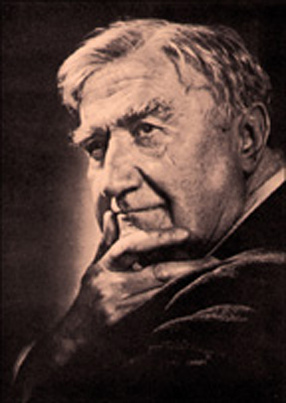by Matthew Raley
So, a guy asks me to play a violin he inherited. I can't find any information about the maker, Lee Nelms, but because the instrument exceeds my low expectations I am intrigued. I want to find out how good this violin is. My problem is that I really don't know how to evaluate one.
Okay, I know how to play. I know what I like. But there's an art to examining a violin that I just don't possess.
For one thing, I have never played a great violin. It's one thing to hear Itzhak Perlman play a Stradivarius in a hall; playing one yourself is something else entirely.
You have the sound immediately under your ear. The surface noise of the bow pulling across the string--or the absence of it--as well as the subtler overtones are all right there. Further, you gain rich tactile information from the way your vibrato warms the tone, the effect of bow pressure and speed, and the vibrations of the violin itself in your hand, shoulder, and head.
John Harrison, a maker in Redding, CA, once told me that he had made a violin decades ago for a Chico State professor. While he was trying the new instrument, Harrison was closeted with the professor's Strad, examining, measuring, and above all playing. It's experience like Harrison's, repeated many times, that I would consider reliable.
To play a truly great instrument is to learn why the sound in the hall is so powerful. Never having had the experience, I feel that my standards are unreliable. I did once play a selection of contemporary Italian violins, each worth a fair amount of money. I didn't like any of them. Part of me says that my coolness can't be right, that my thirty-five years of playing instruments in the yuck-to-good range has messed up my taste.
I also don't really know what I'm looking for in terms of craft. An orchestra colleague of mine, Abraham Becker, once looked over my instrument from various angles, and said, "That is a well-made violin." Since Abraham is vastly experienced, playing everything from classical to Broadway to tangos from his native Argentina, I was gratified to hear his judgment. But I have no idea why he said it so confidently.
I can spot an atrocious varnish, or other obvious failings. An awful violin passed into my hands only two weeks ago, on which the varnish obscured all the grain of the wood, the purfling around the edges of the top and back was painted rather than inlaid, and the strings were unevenly spaced.
But the finer points of excellent craft I only pick up informally.
Still, The Nelms violin has piqued my curiosity. So here's what I'm looking at.


The Nelms impressed me in the case as a beautiful piece of work. I love the color of the varnish, and the grain of the split back.
Here is my own violin:


You can see it's a different model from the Nelms, slightly narrower and longer. You can also see the wear of its two-century history, like the spot where the varnish has worn away on the back by the neck. (The left hand often rests there.) The wood itself has many qualities that I prize, like the unusual grain, and the single-piece back on which the grain is slanted.
I have owned it since high school, when I bought it from my teacher. It hung in his shop for years, and I used to stop in just to play it.
In my next post, I'll compare the sound of these two instruments, and see if I can't diagnose the things that bother me about the Nelms.






